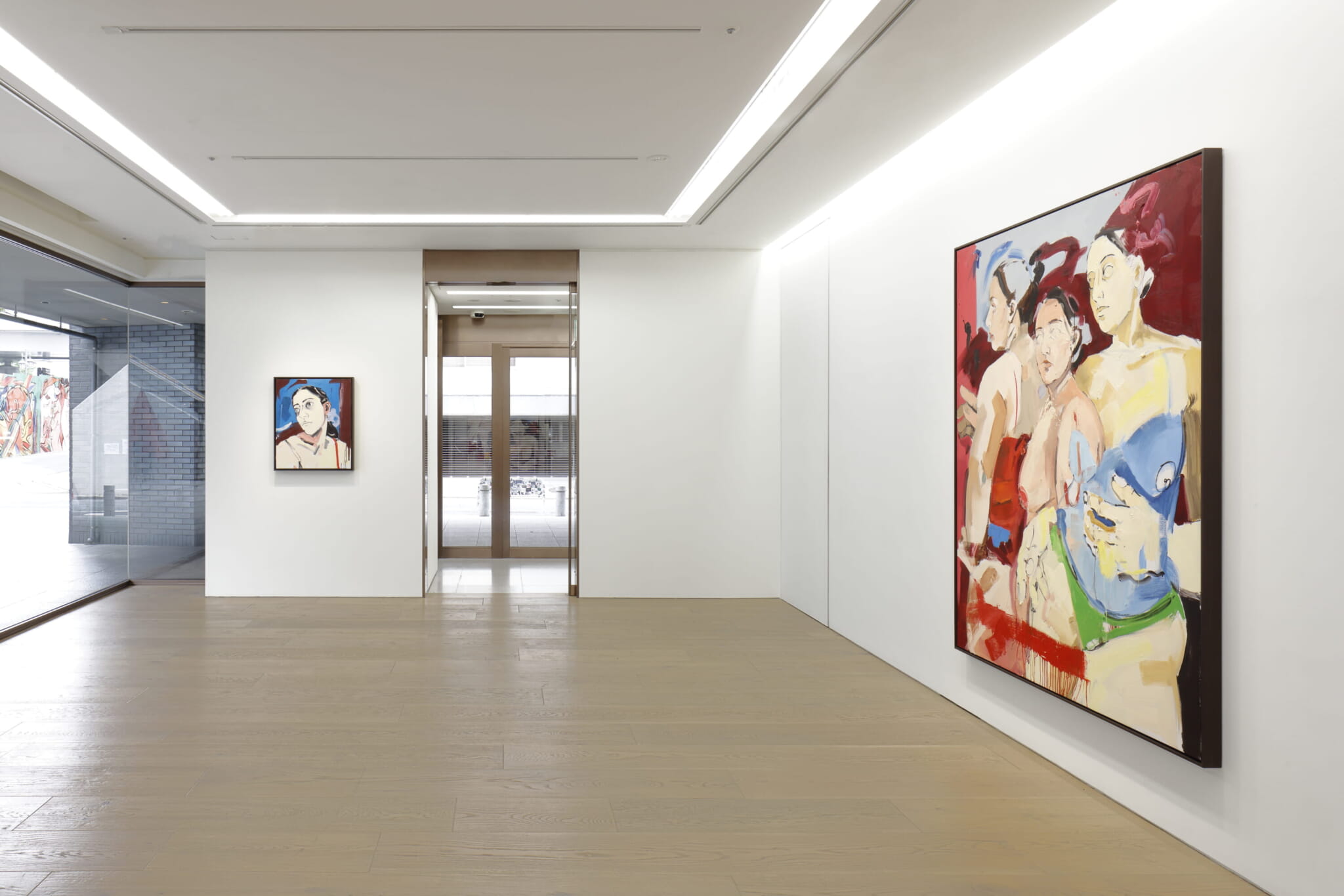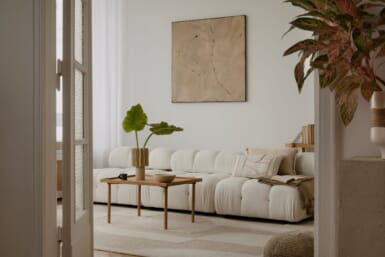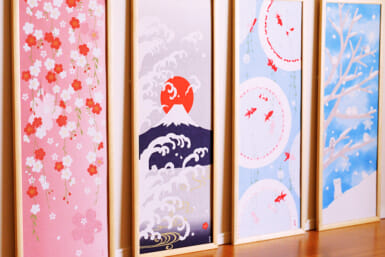Cristina BanBan’s first ever exhibit in Japan, “Figura,” is a non-narrative exploration of form and freedom, reflecting her growth as an artist. Her paintings, though consistently spotlighting the female form, have historically been more narrative. In older pieces, her subjects lounge in plazas or sit in kitchens, their bodies voluptuous and their gazes thoughtful. However, BanBan insists on moving away from naturalism’s need to tell a story. This shift is clear in her newest piece “Figuras III,” which is on display at Perrotin Tokyo — along with other works — until mid-August.

Cristina BanBan, “Figuras III”, 2023. Oil, oil stick on linen. 200.7 x 160 cm | 79 x 63 inch. Photographer: John Berens. Courtesy of the artist and Perrotin
From Autobiographical Narratives to Abstract Aesthetics
A classically trained artist, BanBan’s oil paintings retain elements of realism in the faces, bodies and stances of her subjects. This exhibition shows her stepping away from a more narrative past to consult a more abstract present. “I’ve been experimenting with color and textures, and how I can understand painting in a different way,” BanBan explains. “An abstract painter works with forms, line, texture and composition. I wanted [my works to feel] more like an open book.”
“When I started painting, I always used the female form because painting for me was autobiographical, like a diary or a journal. The closest I could get to painting my own stories was using my own image or the female body,” BanBan says. “Later, I got interested in understanding painting through aesthetics. Studying form and composition and color, I’m moving away from telling stories. I still use the female form as a starting point to build my composition, but the main purpose is not to tell a story.”

View of the exhibition “Figura” at Perrotin Tokyo. Photo by Keizo Kioku. Courtesy of the artist and Perrotin.
“Figura”: The Creation of a New Vernacular
“Figuras III” has an overpowering presence, palpable from the first step into Perrotin Tokyo’s first room. The two larger-than-life women portrayed reflect BanBan’s collision of old and new through their contrasting realism and abstraction. They stand side-by-side, one staring down at the viewer while the other’s eyes are blank and gazing elsewhere. “Even though you can see the whole head and torso, I still leave the eyes incomplete because I felt it was distracting and telling too much,” BanBan says, driving home her desire to deconstruct her art.
BanBan incorporates Abstract Expressionism influences seamlessly through her brush strokes and color usage. A female figure can lean on a chair that blends into the voluptuous bodies of other women, while bold dashes of color in the background simultaneously highlight the chair’s existence. BanBan claims the move towards a non-narrative expression requires her to develop a new vocabulary. “I’m trying to create a new language,” she says, “by mark-making, or colors, or shapes, or dimension, or perspectives, rather than [asking whether the women] know each other.” In many ways, BanBan’s departure from storytelling feels like a move from classical ballet to contemporary dance, prioritizing expression through sensation and form.
The second room of the exhibit is the smallest, and the most intimate. Here, visitors will find charcoal drawings instead of BanBan’s usual colorful paintings, gleaning insight into her process. “I normally like very classical poses and then I try to give it as much movement as I can. I select images that I find interesting for the composition and sketch it in a notebook. Then when I’m happy with it, I just go to the canvas with charcoal,” she explains.
BanBan’s statement is nonchalant but her sketches are confident. With the color stripped away, we are faced with the full force of strength and vulnerability of the female form.

View of the exhibition “Figura” at Perrotin Tokyo. Photo by Keizo Kioku. Courtesy of the artist and Perrotin.
To Tokyo and Beyond
This exhibition marks BanBan’s first-ever visit to Asia. COVID-19 was still in full swing when she worked on an exhibition for Perrotin Shanghai in 2021, limiting her ability to be onsite. She is excited to see how Japanese guests will interact with her works. If she has time, she looks forward to exploring the country before preparing for her next exhibition in London.
BanBan is constantly asking questions about different levels of expression and her show at Perrotin Tokyo is not the end of her artistic evolution. “Figura” is like a vibrant time capsule, capturing BanBan’s current of experimentation and abstraction, with her more naturalistic forms still peeking through at times. Her works invite visitors to take their time exploring them. BanBan’s generous layering and texturing ask viewers to appreciate the physical form — not for the stories it tells or its accomplishments — but for its complex existence. It is a celebration of the present in its unwavering and infinite expression.
Cristina BanBan’s solo exhibition “Figuras” runs at Perrotin Tokyo from July 5 to August 19.









